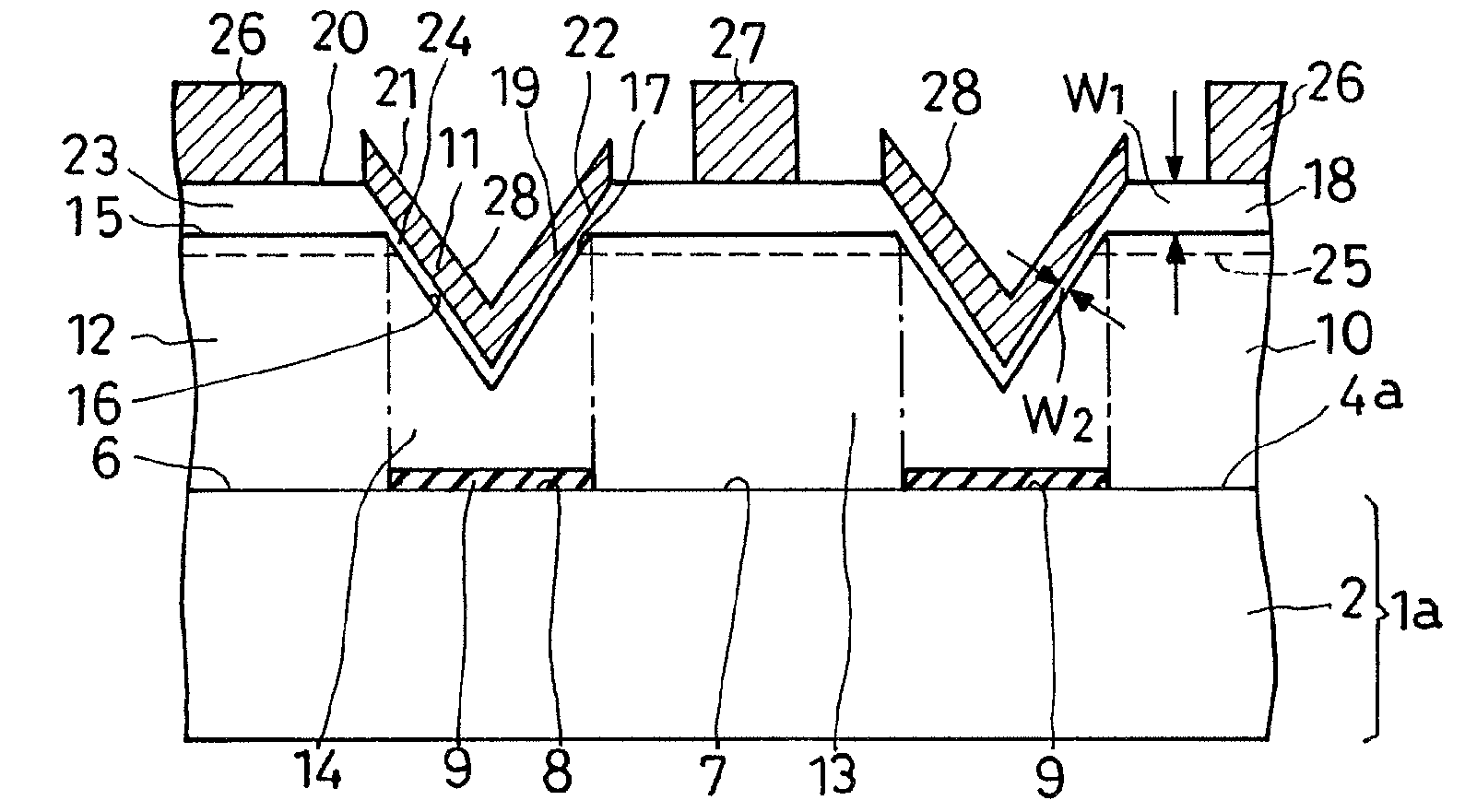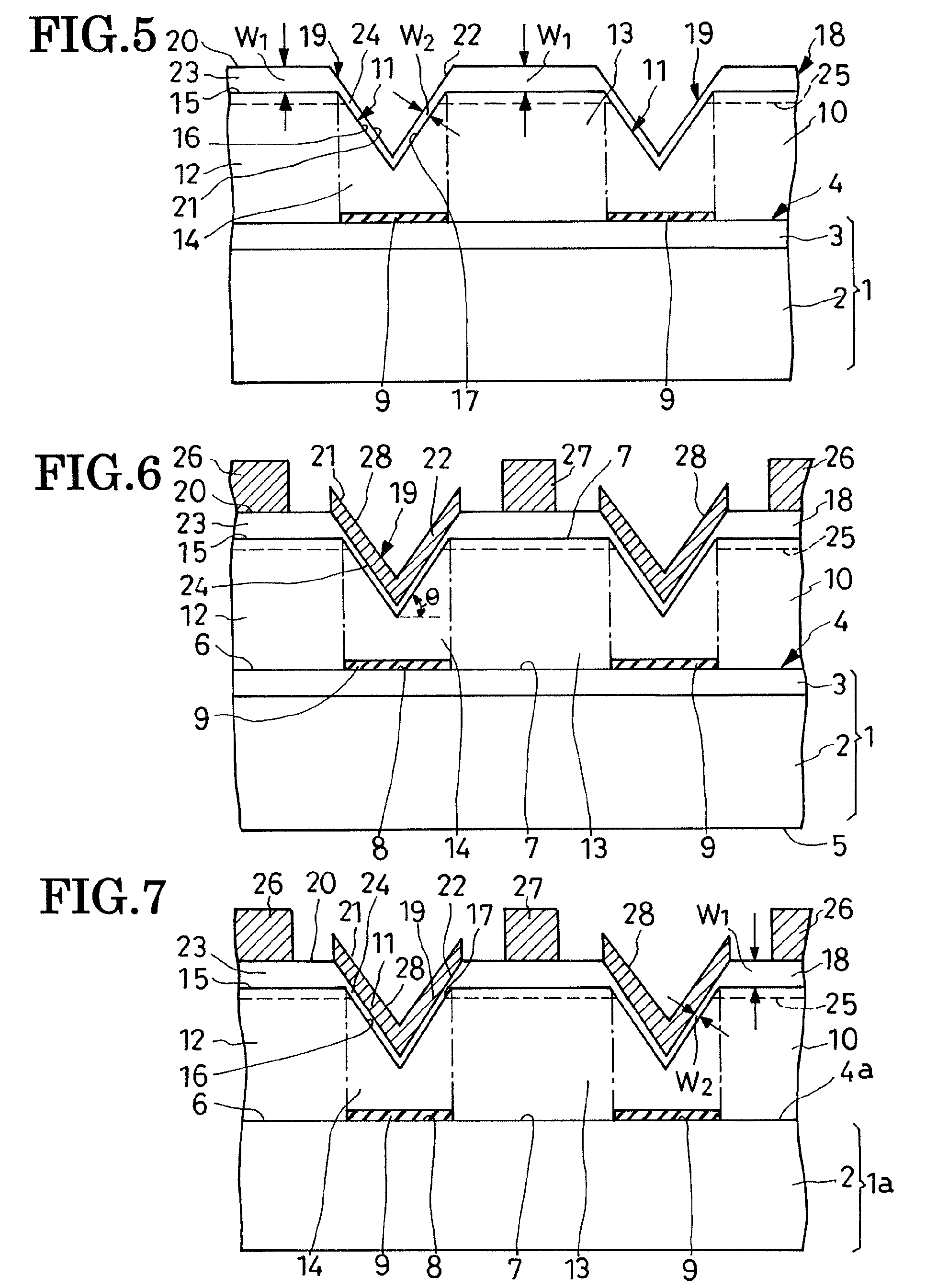Method of fabrication of normally-off field-effect semiconductor device
a semiconductor device and field-effect technology, applied in the field of field-effect semiconductor devices, can solve the problems of reducing the electron concentration in the two-dimensional electron gas layer, inconvenient use of conventional normally-on hemt, and unnecessary associated circuitry, and achieves the effect of reducing the turn-on resistance of the normally-off device, fine adjustment, and easy operation
- Summary
- Abstract
- Description
- Claims
- Application Information
AI Technical Summary
Benefits of technology
Problems solved by technology
Method used
Image
Examples
embodiment
of FIG. 7
[0077]The HEMT shown here differs from that of FIG. 6 only in the absence of the buffer 3, FIG. 2, from its substrate 1a. This substrate 1a is therefore a single layer 2 of silicon throughout.
[0078]The antigrowth masks 9 directly overlie the silicon substrate 1a. These masks 9 and the other constituents of the HEMT, identified by the same reference characters as their counterparts in FIG. 6, are made by the same methods as set forth above with reference to FIGS. 1-6. This embodiment offers the advantage, in addition to all those enumerated above, that all the semiconductor growth processes needed for the HEMT fabrication can be streamlined. An independent buffer might be interposed between substrate 1a and electron transit layer 10, though.
Embodiment of FIGS. 8-10
[0079]The third preferred form of HEMTs are shown in two different stages of fabrication in FIGS. 8 and 9 and completed in FIG. 10. This embodiment features a quasi-V-notch 11a, FIGS. 9 and 10, in an electron trans...
PUM
 Login to View More
Login to View More Abstract
Description
Claims
Application Information
 Login to View More
Login to View More - R&D
- Intellectual Property
- Life Sciences
- Materials
- Tech Scout
- Unparalleled Data Quality
- Higher Quality Content
- 60% Fewer Hallucinations
Browse by: Latest US Patents, China's latest patents, Technical Efficacy Thesaurus, Application Domain, Technology Topic, Popular Technical Reports.
© 2025 PatSnap. All rights reserved.Legal|Privacy policy|Modern Slavery Act Transparency Statement|Sitemap|About US| Contact US: help@patsnap.com



